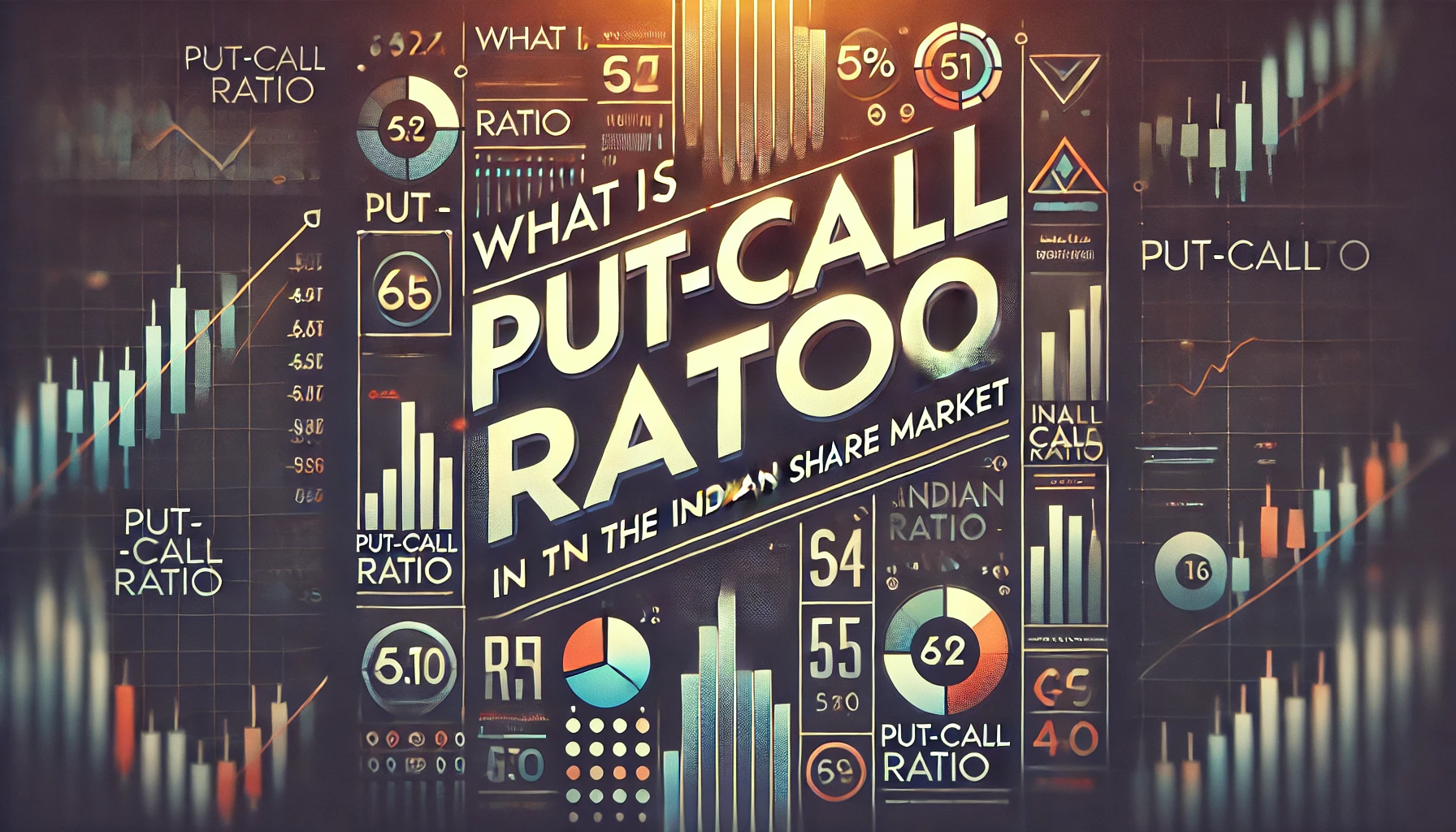Rollover is a common term in the world of futures and derivatives trading, especially in the Indian share market. It refers to the process of extending an existing futures position to the next expiry date. While this concept might seem straightforward, it plays a crucial role in the overall futures market dynamics, impacting market trends, liquidity, and trading strategies.
In this detailed guide, we will explore what rollover is, how it works, and why it matters for traders in the Indian share market. We’ll also delve into historical data and provide practical examples to give a clearer understanding of its implications.
What is Rollover in the Indian Share Market?
In the context of futures trading, rollover refers to the process of closing out an existing futures contract that is approaching its expiration date and simultaneously entering into a new futures contract with the same underlying asset, but with a further expiration date.
Key Points to Understand:
- Closing the Existing Position: As a futures contract nears its expiry date, the trader must close the current position. This can be done either by settling the contract or by executing a reverse trade (buying if they previously sold, and vice versa).
- Opening a New Contract: The trader then opens a new position in a contract with a further expiration date, essentially “rolling over” their position to the next contract month.
How Does Rollover Work?
The rollover process generally takes place during the last week before the expiry of the contract, known as the expiry week. Traders who wish to avoid settlement of the futures contract prefer to roll over their positions rather than close them outright.
For example, if a trader holds a Nifty futures contract set to expire in September, they can close this position before expiry and simultaneously open a new Nifty futures contract expiring in October. This ensures that their market exposure continues without interruption.
Example of Rollover Process:
| Date | Action | Futures Contract | Expiry Date |
|---|---|---|---|
| 20-Sep-2023 | Close existing position | Nifty Futures (Sep) | 28-Sep-2023 |
| 20-Sep-2023 | Open new position | Nifty Futures (Oct) | 26-Oct-2023 |
This process allows traders to maintain their positions in the market without taking physical delivery or settling the contract.
Why Do Traders Rollover Positions?
There are several reasons why traders in the Indian share market opt for rollovers:
- Avoiding Expiry Settlement: Many traders do not want to physically settle a futures contract, especially in the case of commodities or financial indices. By rolling over, they can extend their exposure without dealing with physical settlement.
- Maintaining Market Exposure: Traders who want to remain invested or exposed to a particular market trend, but see the current contract approaching its expiry, prefer to roll over their position to keep their exposure intact.
- Speculative Strategies: Speculators often use rollovers as part of their strategy to take advantage of future market movements. If they expect a continuation of a trend, they might roll over their position to a new contract with the expectation of further gains.
- Cost of Carry and Liquidity: Traders consider the cost of carry, which includes factors such as interest rates and dividend payments, while deciding whether to roll over. The liquidity in the upcoming contract is also a critical factor in making this decision.
Rollover in Indian Stock Market Indices
The Nifty 50 index and Bank Nifty are two popular indices in India that witness significant rollover activity. Understanding the rollover trends in these indices can provide insights into market sentiment and future market movements.
| Month | Nifty 50 Rollover (%) | Bank Nifty Rollover (%) |
|---|---|---|
| January 2023 | 72% | 65% |
| February 2023 | 75% | 68% |
| March 2023 | 78% | 70% |
| April 2023 | 73% | 67% |
In the above table, we see that a higher percentage of rollovers indicate that traders are extending their positions to the next expiry month, suggesting continued interest in the market.
Factors Influencing Rollover Decisions
Several factors influence the decision to roll over positions:
- Market Sentiment: If traders are bullish on the market, they are more likely to roll over their positions to avoid missing out on potential gains.
- Cost of Carry: The cost of carrying a futures position to the next month, which includes interest rates and storage costs (for commodities), plays a critical role in determining whether traders will roll over their positions.
- Liquidity in New Contracts: Traders prefer to roll over their positions into contracts with adequate liquidity. Low liquidity can result in unfavorable pricing and higher spreads, making it difficult to execute the rollover efficiently.
- Open Interest Data: Open interest refers to the total number of outstanding futures contracts that have not been settled. Monitoring open interest data can provide clues about rollover trends, with increasing open interest suggesting strong rollover activity.
Historical Rollover Trends in India
Rollover trends in the Indian share market provide a wealth of data for analyzing market sentiment. By examining historical rollover data, traders can identify patterns and anticipate future market movements.
Rollover Trends in the Nifty 50 and Bank Nifty:
| Year | Nifty 50 Rollover (%) | Bank Nifty Rollover (%) | Market Sentiment |
|---|---|---|---|
| 2020 | 70% | 60% | Bullish (Post-pandemic recovery) |
| 2021 | 75% | 65% | Bullish |
| 2022 | 68% | 62% | Bearish (Market correction) |
The data shows that higher rollover percentages often coincide with bullish market sentiment, while lower rollovers may suggest a bearish outlook or market uncertainty.
Benefits and Risks of Rollover
Like any trading strategy, rollover has its own set of benefits and risks. Understanding these can help traders make informed decisions about whether or not to roll over their positions.
Benefits:
- Continued Market Exposure: Rollover allows traders to maintain their positions without having to settle their contracts or take delivery of the underlying asset.
- Flexibility: Rollover provides flexibility for both hedgers and speculators, allowing them to adjust their positions based on market conditions and future expectations.
- Cost-Effective: Rollover can be cost-effective, as traders avoid the costs associated with settlement and can extend their positions at a relatively low cost.
Risks:
- Cost of Carry: The cost of carry can erode profits over time, especially in commodities where storage costs and interest rates can add up.
- Market Risk: Rollover does not eliminate market risk. If the market moves against a trader’s position, they could incur significant losses despite rolling over their position.
- Liquidity Risk: If there is low liquidity in the new contract, executing the rollover can become expensive, with wider spreads and less favorable pricing.
Practical Example: Rollover in Reliance Industries Futures
Let’s consider a real-world example of rollover in a stock like Reliance Industries.
| Date | Action | Futures Contract | Expiry Date | Price (₹) |
|---|---|---|---|---|
| 25-Jun-2023 | Close existing position | Reliance Futures (Jun) | 29-Jun-2023 | 2,500 |
| 25-Jun-2023 | Open new position | Reliance Futures (Jul) | 27-Jul-2023 | 2,520 |
In this case, the trader rolls over their position in Reliance Industries from June to July. By doing so, they maintain their market exposure without settling the contract.
Impact of Rollover on Market Sentiment
Rollover data is closely watched by market participants, as it can provide insights into the broader market sentiment. High rollovers in major indices like the Nifty 50 or Bank Nifty are often interpreted as a sign of confidence in the market, while low rollovers may signal caution or uncertainty among traders.
Rollover analysis is particularly important during periods of market volatility, where traders look for clues about future market direction. By analyzing the rollover percentages, traders can gauge whether market participants are bullish or bearish on the upcoming month.
Conclusion
Rollover is an essential concept in futures trading, especially in the Indian share market, where indices like Nifty 50 and Bank Nifty witness significant rollover activity every month. It allows traders to extend their positions into the next contract month without settling the current contract, providing continued market exposure and flexibility.
Understanding the nuances of rollover, including the factors that influence it and its implications on market sentiment, is crucial for traders looking to optimize their trading strategies. By keeping an eye on historical rollover data, open interest, and market conditions, traders can make informed decisions about when to roll over their positions.

What Is Implied Volatility?
In the realm of Indian share market derivatives, implied volatility (IV) plays a crucial role …

What is Margin Funding?
Margin funding is a powerful tool in the Indian share market that allows traders to …

Forward vs Future contract
In the Indian share market, derivatives such as forward and future contracts play a pivotal …

What is Margin Money?
Margin money is a crucial aspect of trading in the Indian share market, especially in …

What is Put-Call Ratio?
The Put-Call Ratio (PCR) is one of the most widely used indicators in options trading …

What is Derivatives?
Derivatives are financial instruments whose value is derived from an underlying asset or benchmark. In …

What is Cost of Carry?
The cost of carry is an essential concept in futures trading that reflects the cost …

What is futures
Futures are a fundamental part of derivatives trading in the Indian stock market. They allow …

Bullish Option Strategies
In the ever-evolving world of derivatives trading, options have become a powerful tool for investors …

Understanding Physical Settlement in Futures & Options Contracts: A Comprehensive Guide
In the world of derivatives trading, the concept of physical settlement has gained prominence, particularly …

what are call options
The Indian share market has expanded significantly over the years, attracting a growing number of …

What Is Credit Spread Strategy
In the world of options trading, the credit spread strategy is one of the most …

What Is a Forward Contract
A forward contract is a customized financial agreement between two parties to buy or sell …

Types of Derivatives in India
The Indian derivatives market has grown exponentially, becoming a vital tool for investors and traders …

What is Swaps Derivatives
In the world of derivatives, swaps are a special class of contracts that allow two …

Intrinsic Value and Time Value of Options
Options trading is one of the most widely used financial instruments in the Indian share …

What is Open Interest?
In the world of derivatives, the concept of “Open Interest” plays a crucial role in …

Types of underlying assets in derivatives
The Indian derivatives market has grown exponentially over the last few decades, thanks to its …

derivatives on Option Volatility & Pricing Strategies
The Indian share market derivatives segment is a dynamic environment where advanced traders rely heavily …

What is Futures Contract
The Indian share market offers various financial instruments that provide opportunities for investors and traders. …

What is implied volatility in options?
In the world of options trading, one of the most crucial elements to understand is …

Futures Pricing Formula
The Indian share market is known for its dynamic nature and offers various opportunities for …

What is an ITM Call Option?
The world of options trading is filled with technical terms that are crucial for investors …

What is Max Pain Theory?
The Indian share market is full of strategies and theories that traders use to predict …

What is OTM Call Options
In options trading, terms like “in the money” (ITM), “at the money” (ATM), and “out …

What Is Rollover
Rollover is a common term in the world of futures and derivatives trading, especially in …

Futures Prices Converge Upon Spot Prices
In the world of financial markets, futures contracts play a significant role. One of the …

Call Ratio Back Spread
In the Indian share market, advanced trading strategies such as the Call Ratio Back Spread …

Margin Call Meaning
A margin call is one of the most critical warnings in trading, often marking a …

What is Bermuda Option?
The financial markets are full of complex instruments, and one such tool is the Bermuda …


















